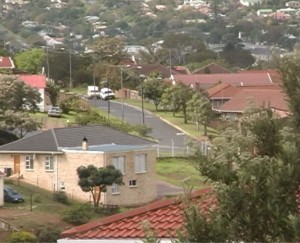 Public Journalism: Public journalism is a form of media research which differs from the conventional way of journalism. Whereas conventional journalism has traditional roots and respects the notion of objectivity, public or civic journalism encourages change, citizen participation and journalistic activism. Public journalism seeks to address people as citizens, citizens who can act upon a certain issue, in this case crime. Our public journalism campaign focused on the areas of Somerset Heights, Oatlands North and Currie Park. These areas are home to Grahamstown’s middle to upper class society.
Public Journalism: Public journalism is a form of media research which differs from the conventional way of journalism. Whereas conventional journalism has traditional roots and respects the notion of objectivity, public or civic journalism encourages change, citizen participation and journalistic activism. Public journalism seeks to address people as citizens, citizens who can act upon a certain issue, in this case crime. Our public journalism campaign focused on the areas of Somerset Heights, Oatlands North and Currie Park. These areas are home to Grahamstown’s middle to upper class society.
Private security trumps state security in these areas. Being part of the middle/upper class, residents in these areas are able to invest in private security to protect their property. There appears to be a relationship of trust with private security companies, such as Hitec in particular. However this same relationship is missing when it comes to the police. The residents view the police as being ‘inefficient and incompetent’ and this contributes to the negative perception and strenuous relationship the residents have with them. As public journalists we need to identify the problems citizens face, and together with the citizens attempt to facilitate change and work towards a resolution. This clip was the first step towards understanding how the residents feel about the police. This clip was also shown to the police so that they gain an understanding of the problems faced by the residents in terms of policing. A resident expresses his views on Hitec and the Police:
Resident Apathy:
The issue of apathy was also a major topic of discussion not only between the residents and the police but among the residents themselves. The police feel that the residents are apathetic when asked to assist in measures to tackle crime. By highlighting the problem of apathy among residents in the focus group, a public journalism approach aims to actively seek the engagement of citizens in the process of public problem solving. So apathy on the part of the residents is in direct contrast to the ideals of participant based civic journalism. Highlighting a particular issue and making the public aware of its existence and meaning is the first step towards tackling it and bringing about change. Apathy through the eyes of a resident:
Answering the Communities issues:
The community meeting provided the residents with the chance to raise their concerns towards the police. The meeting stimulated discussion between the residents and the police, and issues that were previously unknown to the police were raised and responded to adequately. Public journalism is a response to 2 widening gaps- in our context the gap between the residents and the police. By allowing communication and discussion forums such as these, we as public journalists are initiating the first steps towards building bridges and repairing the relationship between these two entities. As media professionals we can help in the process of resolution between the police and the residents. A resident vents his frustration towards the process of reporting crime: